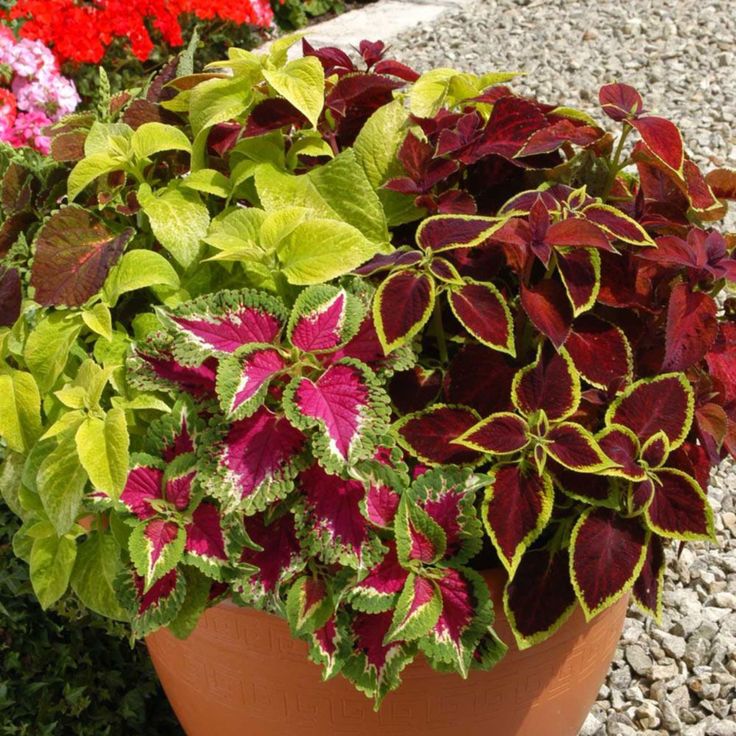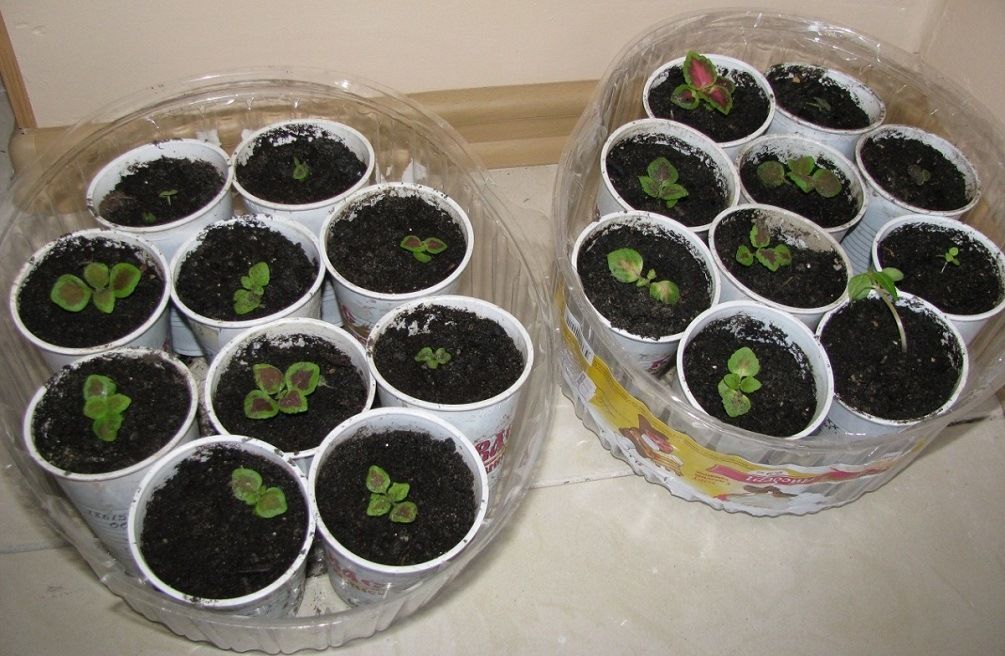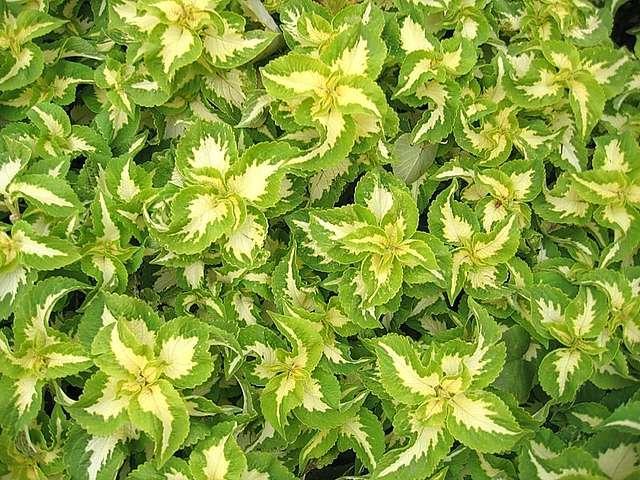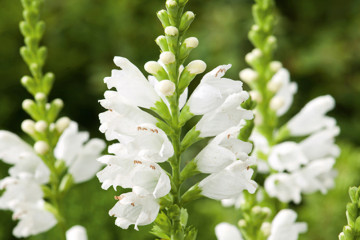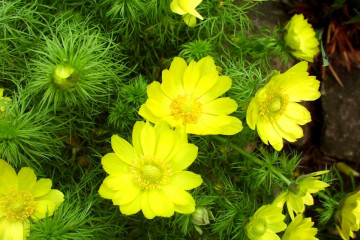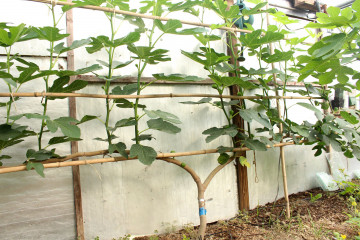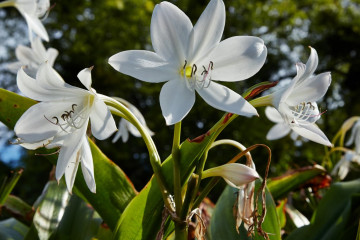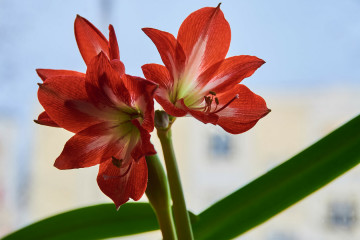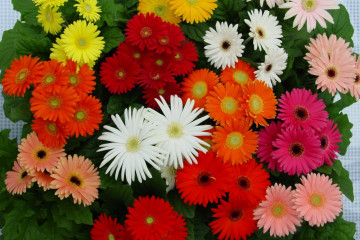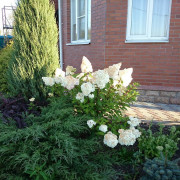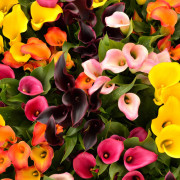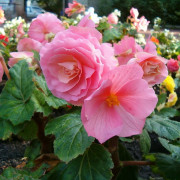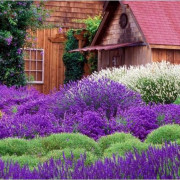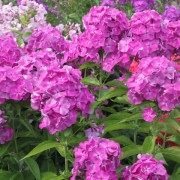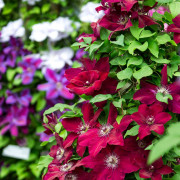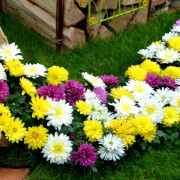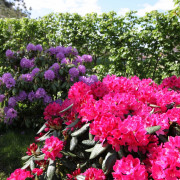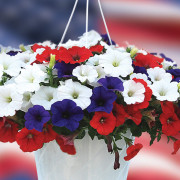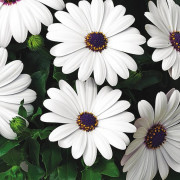Coleus flower - care and cultivation in the open field
Content:
- Description of the plant
- Types of coleus for the garden
- Coleus: growing conditions
- Growing coleus from seeds
- Coleus: planting and care in the open field
- Leaving during flowering
- Coleus - care during the rest period
- Transplant and reproduction
- Preparing for winter
- Possible pests and diseases when caring for coleus
Colorful Coleus bushes are able to decorate gardens in summer and window sills in winter. Unpretentious decorative leafy nettles are popular with florists and landscape design decorators. Colorful colors allow you to choose a plant for every taste. And the ease of reproduction is to keep your favorite bush in your flower garden for many years.
Description of the plant
Coleus translated from Latin means case. What is the reason for this designation is unknown. These colorful flowers belong to the Lamb family. The homeland of the flower is the tropical forests of Africa and Asia. From the tropics, decorative nettles have retained their home care requirements for high humidity, warmth and light. These factors affect the color and contrast of the color of its leaves.
Coleus is a short shrub. Shoots are tetrahedral, woody at the base. Leaves are cordate, about 6 cm long, with denticles at the edges. The color of the leaf plates combines green, yellow, red, pink and burgundy colors. Exotic inflorescences most often do not represent decorative value.
In the garden, using the bright color of exotic bushes, you can create contrasting spots on the flower beds, or combine several shrubs with each other. In a single version, they look spectacular in large tubs or outdoors.
Types of coleus for the garden
Coleus has more than 400 species, hybrid and specific. They are very diverse in leaf shape, color and size of the shrub.
Coleus Blume
The founder of many hybrid varieties. The Blume variety includes many species with different colors. They are united only by the shape of the leaf - ovoid with a pointed end. The denticles along the edges are not sharp, but rounded. The colors of the leaf plates are very diverse. This variety of coleus combines red, pink, cream, white, yellow, purple, black, brown-yellow palette. Grows as a garden and indoor plant. It is unpretentious in care, often propagates by cuttings. Colorful and common varieties of Blume - dawn, fun, orange.
Coleus Black Dragon
Many people fell in love with the unusual color. Dark purple-burgundy color of the leaves, sometimes with a green edging, or with a pink spot. The beauty of this shrub is added by the wavy shape of its velvety leaves (a property of hybrid varieties). Used in contrasting garden compositions. It winters well on the windowsills of apartments. Propagated by cuttings, picky about high humidity.
Coleus Renault or Renelta
Not a very tall shrub, more used as an ampelous one. The color of the leaves is different, but the veins of Reno coleus are always crimson or purple-red. An interesting view is that by the fall it can change the color of its leaves several times.
Coleus Dog
Dog Coleus, popularly called spur flower or plectrantus. The plant is very similar in appearance to the coleus and is just as unpretentious. The flower acquired an interesting name because of its pronounced smell. The flower begins to exude a strong aroma, as soon as its leaves are touched.Spurs planted around the perimeter of the bed protect the crop from animals, insects and snakes, which do not like the scent of this bush.
Coleus Forskolia
Tropical mint, native to Thailand. Used in Ayurvedic and Chinese medicine. The plant has a wide range of medicinal uses - diseases of the respiratory tract, cardiovascular system and digestive tract.
Avatar
A variety that is called royal. Its leaves are distinguished from other species by their large size. The color shimmers on the leaf, and the palette goes from green to maroon. But in appearance, his closeness to the kings ends. In leaving, Avatar is also unpretentious. But nutritious soil and regular feeding must be in order to maintain the beauty of its large leaves.
Coleus: growing conditions
A bright and healthy appearance is due to proper care.
In order for a bright bush to please with its color all season, it is important to take care of the following conditions:
- Lighting is important to maintain the richness of the colorful colors in the leaves. In the morning, the lighting should be bright and abundant. After lunch, partial shade is encouraged.
- The temperature for a heat-loving plant should be at least 18 ° C in summer and at least 12 ° C in winter.
- Watering needs frequent and abundant. Exot loves moisture very much, so frequent spraying will only benefit him.
- You need to maintain a bright color with regular feeding: weekly in summer and monthly in winter.
Growing coleus from seeds
You need to sow seeds at the end of March in order to get a large and strong bush by the time of planting in open ground. The soil mixture needs light and nutritious. The combination of turf, peat and humus will provide small seeds with everything they need to germinate. You do not need to deepen the seeds into the soil, you can lightly sprinkle them with sand. Seedlings should germinate under glass in a warm, low light environment. You need to monitor soil moisture daily.
With the appearance of the first shoots, the glass must be removed and the pots must be transferred to a well-lit place. The optimum temperature for seedlings is 19 degrees.
When the seedlings are one month old, they are ready for picking into individual pots of small diameter (up to 7 cm). It is necessary to care for such seedlings as for an adult plant. At the age of two months, the nettle should be transplanted into a larger pot with a diameter of up to 12 cm and the apical shoot should be pinched for bushiness.
Coleus: planting and care in the open field
Coleus is a thermophilic flower, planting should be carried out in well-heated soil, without a possible sharp drop in temperature and frost. It is better to plant in the evening. The place should be sunny and sheltered from the wind.
Sand, peat, turf and leafy soil must be mixed in equal parts and prepared for planting seedlings. Small planting holes, into which the seedlings will be rolled over, and the prepared soil mixture will be poured, should be dug out at the time of transplanting.
Watering is an important part of grooming
After planting, it is immediately necessary to water the seedlings abundantly. Coleus is watered with settled warm water, often and abundantly. After watering, you need to loosen the soil around the bush and remove weeds.
In winter, when the Coleus is at home as a houseplant, watering must be reduced. But do not allow the earthen coma to dry out.
Top dressing
You need to fertilize the flower every seven days, from the beginning of the spring awakening until the autumn cold. In the autumn-winter period, complementary foods are applied once a month in a diluted form (50% of the amount specified in the description). For complementary feeding, you need to alternate organic matter with mineral fertilizer. Be sure to feed with nitrogen at the beginning of spring, for juicy color and contrasting foliage transitions.
Leaving during flowering
Flowering is always an energy-consuming process. And since the flowering of Coleus does not represent any decorative effect, it is necessary to save the plant's reserves of strength for the growth of greenery than harvesting seeds.
From the very beginning of the ejection of a flower spikelet, it should be removed. The cut site does not need processing.
Coleus - care during the rest period
Caring for Coleus at home is even easier than summer. Watering in winter is reduced. More important in winter will be air humidity. Regular spraying and remoteness from heating devices will help preserve the decorative effect of the shrub until spring.
A thermophilic phyto-friend will feel comfortable at 16-18 ° C in winter. A drop in temperature in winter below 12 ° C can cause leaves on the bush to drop. There should be sufficient lighting, but no direct sunlight.
In February, the period of active awakening of the plant begins. The bush is cut, watering and groundbait begin to increase. If you plan to plant the same bush for the summer in open ground, you must do a complete pruning of the shoots. Leaving 5-6 eyes for renewal, after active growth, you can get a young plant with a well-developed root mass. Transplanting such a bush into open ground does not require an adaptation period.
Transplant and reproduction
If the climate allows you to grow an exotic bush in the open field as a perennial, then a transplant to change the soil is necessary for it every 3-4 years. Experienced breeders update the shrub after such a period of time, as it loses its decorative effect over the years. Indoor perennial Coleus needs a transplant every spring.
It is very easy to propagate Coleus by cuttings. You can use the rooting method directly into the soil, or wait for the first roots in the water. Shoots take root quickly and take root in the soil. The optimal period for cuttings is from February to May. During cuttings, it is necessary to transfer the seedling into a larger pot every 4 weeks.
In caring for young rooted shoots, the following conditions must be observed:
- temperature - not lower than 16 ° C;
- frequent watering;
- optimal air humidity;
- adequate lighting.
The soil for rooting needs loose and nutritious. You can use universal substrates for ornamental deciduous plants, or you can independently mix the turf soil with peat and humus.
Preparing for winter
The end of summer can take place with sharp temperature changes and a decrease in temperature to 10 ° C. Coleus will not tolerate such a decrease and drops in the open field. At the first signs of autumn coolness, the plant must be dug up and planted in a pot, where it will winter. Annual varieties are cuttings.
Possible pests and diseases when caring for coleus
Among the pests on the bush you can find:
- spider mite;
- lionfish;
- whitefly.
Regular inspection of the foliage of the shrub will prevent the reproduction of pests and protect most of the greenery from damage.It is important to isolate the flower from other indoor plants if it is the wintering period at home. Timely treatment from pests allows you to protect the flower from death.
Diseases bypass this variety. The only reason for changes in the appearance of the Coleus plant is improper care. The main mistakes in leaving:
- Direct sunlight - leaves burns on the sheet plates. Over time, the burnt leaf dries up and falls off.
- Lack of light will affect the color of the leaves. It will be pale, the light parts will become translucent.
- Too dry air will show as brown spots on the leaves.
- With a lack of nutrients, it sheds the leaves, starting from the lower ones. The plant is especially hungry in the fall.
- During wintering, Coleus can stretch out its shoots, on which leaves are rarely placed. The lack of daylight hours is the reason for this growth of shoots.
There is only one disease prevention - proper planting and caring for the Coleus.
The flower has no special requirements for keeping conditions. Its tropical roots require warmth, light and moisture. Coleus are excellent decorators of garden beds and plots. Fiery color throughout the winter will remind you of a bright and colorful summer.


